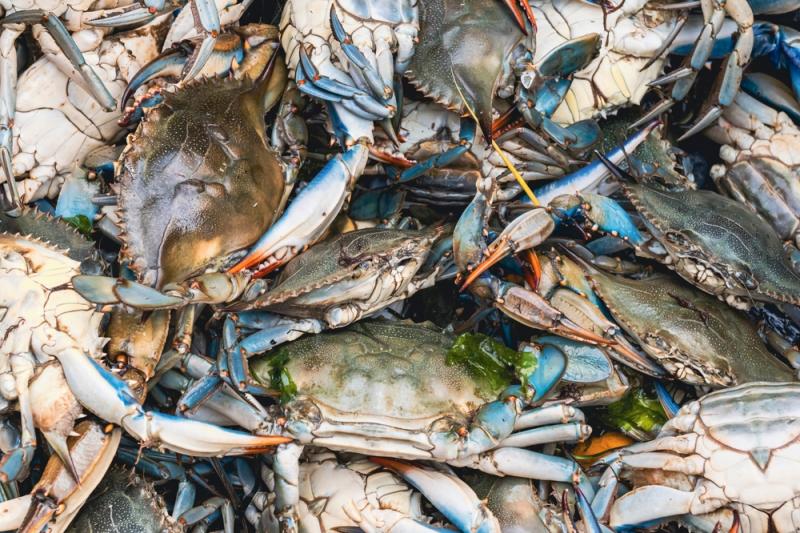On the northeastern coast of Italy, it’s not just the locals who are enjoying the sunshine and higher temperatures lately: Invasive blue crabs in the Adriatic are having a whale of a time with the early warm weather.
Blue crabs are not new to the region. Some estimate they arrived in the Venice Lagoon from the North Atlantic as early as 1949, but only since 2010 have established populations been observed along the coast. Another species arrived from the Indo-Pacific oceans. Having been left alone for far too long, those populations have expanded from a trickle to a swell.
The crabs eat the bivalves that inhabit the Po River Delta and the surrounding Veneto and Emilia Romagna coastlines, where the creatures can no longer be kept at bay. Although breeding season is normally in summer, with spring rolling in ever earlier due to climate change, experts warn of a devastating proliferation of the crustacean this year. Females can produce an average of 2 million eggs a year, and there are no natural enemies.
For this alien species, the world — or at least the coves and inlets of the Po Delta — is their oyster.
Close encounters of the crustacean kind
Fishermen from the Polesine Fishermen’s Consortium, which farms and fishes the PDO-designated Cozza di Scardovari (mussel), as well as clams and other bivalve varieties in the Po Delta area, were forced to cease activities in February due to the lack of supply. Where they used to harvest 36 tons, they now harvest a meager 1,500 pounds (0.7 tons).
Fedagripesca-Confcooperative also reported a loss of around €100 million just for mussels. The blue crabs were the catch of the day for headlines in fall 2023 after a ministerial decree in August made €2.9 million available to the consortiums to quell the invasion.
An environmental bombshell
Mussels are considered a bioindicator of marine ecosystems: If they are struggling, so is the rest of the sea life. Mussel aquaculture is also said to have a low environmental impact for its potential to remove large amounts of carbon during production — when done responsibly, of course.
In addition to devastating the local fishing cooperatives, the invasive crustacean is a threat to the estuary ecosystem, for which the mussels and clams play an essential role.
In September, the IPBES published a report on the catastrophic effects of alien species on environments and economies, a phenomenon that fishermen on the Adriatic coast are currently experiencing firsthand.
Solutions that make waves
At first, when the government decree encouraged the “catching and disposal of the species,” locals weren’t sure what to do.
Chiara Pavan, chef of Venissa Tenuta, was among that group: “That the government has finally allocated €2.9 million for the ‘blue crab’ problem might partially compensate for the damage suffered by fishing communities so far,” Pavan wrote on Instagram. “But can this money solve the invasion? We need a concrete plan to define where these blue crabs will go and prevent them from becoming landfill material. Eating it in restaurants and educating about its consumption at this point is not enough.”
Venissa, a Michelin-star restaurant, has been using blue crab and other alien species for several years — it’s a tenet of their menu, which serves what they call “environmental cuisine.” Eventually, others joined the blue crab current and the shellfish have started popping up on supermarket shelves and menus. (A kilo of them goes for around €5 at my local supermarket in Milan). But is simply serving it locally enough?
Some see a solution on distant shores. Mariscadoras, a B-corp in sustainable fisheries, has been working on a project that returns the crabs to their native waters. In August, the first container of processed crab arrived in Miami to be sold to the American market, where blue crab is in high demand and supply is paradoxically in decline. The selfish shellfish are returning home.













